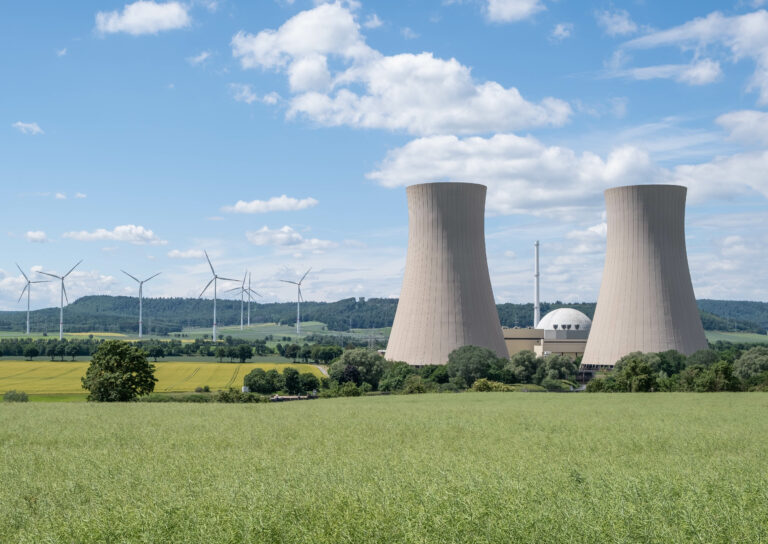Tree planting has gained momentum as a key strategy in corporate efforts to achieve net zero emissions. And it’s easy to see why. Trees absorb carbon dioxide and release oxygen, making them a natural ally in the fight against global warming. But their impact goes beyond that.
In this article, we’ll explore how tree planting can fit into your net zero strategy and why it’s essential to balance it with immediate efforts to reduce carbon emissions.
How do trees help combat the climate crisis?
Trees provide multiple environmental benefits, many of which directly support a company’s journey to net zero. Let’s look at a few key ways trees help address the climate crisis:
1. Carbon sequestration
Trees act as natural carbon sinks, absorbing CO2 and locking it away. On average, a single tree can absorb around 54.5 tonnes of CO2 over its lifetime, though the amount varies depending on factors like species, size, and location.
2. Cooling effect
Trees also provide significant cooling effects. A study by Friends of the Earth found that green spaces can reduce night-time temperatures in cities by up to 5°C, reducing the heat stress associated with urban environments.
3. Water cycle regulation
Trees regulate the water cycle by capturing rainwater, which helps prevent flooding and landslides. Their root systems also filter water and trap pollutants, improving soil health and reducing erosion.
4. Air pollution reduction
By filtering harmful pollutants through their leaves and bark, trees act as natural air purifiers, improving air quality in both urban and rural areas.
5. Biodiversity and wildlife support
Tree planting can boost wildlife habitats and biodiversity, provided that the native tree species are planted in the right locations. Healthy, biodiverse ecosystems are more resilient to environmental changes, making tree planting a crucial part of nature restoration.
Not a quick fix for decarbonisation
While tree planting is a powerful ally in the face of the climate crisis, it’s important to understand its limitations. It takes years, sometimes decades, for trees to mature and sequester significant amounts of carbon. For this reason, reducing emissions at the source remains the most effective and immediate way to combat climate change.
Additionally, the carbon offsetting value of tree planting should not be overstated. While trees do absorb CO2, their ability to offset emissions can be reversed by natural disasters like droughts, forest fires, pests, or deforestation. For more permanent solutions, consider technologies like Direct Air Carbon Capture and Storage (DACCS) and Bioenergy with Carbon Capture and Storage (BECCS) which offer long-term carbon removal potential. While they are still in the early stages of development, these solutions hold great potential for long-term carbon removal and will play a critical role if we’re to stay within the 1.5°C warming limit.
The Oxford Principles for Net Zero Aligned Carbon Offsetting
For organisations looking to responsibly integrate offsetting into their climate strategy, The Oxford Principles for Net Zero Aligned Carbon Offsetting provide valuable guidance. These principles emphasise the need for direct emissions reductions, using offsetting only as a complementary tool:
• Cut emissions, use high quality offsets, and regularly revise offsetting strategy as best practice evolves
• Shift to carbon removal offsetting
• Shift to long-lived storage
• Support the development of net zero aligned offsetting.
By following these principles, organisations can ensure that their carbon offsetting aligns with best practices while maintaining a focus on aggressive emissions reduction.
How is Zenergi supporting the tree planting movement?
At Zenergi, we’re committed to helping organisations integrate tree planting into a holistic net zero strategy. We partner with Treeapp, a global organisation planting trees in areas where they’re needed most, to combine tree planting with broader sustainability initiatives. Recently, our customer Beaverbrooks planted nearly 4,500 trees in Norfolk, and an additional 500 trees were planted on Zenergi’s behalf. These 500 trees are expected to absorb around 54.5 tonnes of CO2 over their lifetime.
Treeapp warns against the risks of relying on carbon credit projects, where the sole purpose of the project is to absorb as much carbon as possible, which will often result in the planting of monocultures, (planting only one species) and bring very little biodiversity benefit. Kevin Ghassemi from Treeapp’s Strategic Partnerships team says: “At Treeapp, our focus is on creating holistic wooded areas, balancing biodiversity, carbon absorption, and community benefit, rather than using our projects as verified offsetting options.”
Bringing tree planting to life
Tree planting doesn’t just support climate action, it also aligns with several of the UN Sustainable Development Goals (SDGs), which were developed to motivate action to end poverty, protect the planet and improve people’s lives and prospects. Here’s how:
- SDG 2: Zero Hunger – Trees improve agricultural productivity by enhancing soil fertility and water retention, supporting food security.
- SDG 3: Good Health & Wellbeing – Spending time in nature, surrounded by trees, enhances mental and physical health.
- SDG 11: Sustainable Cities & Communities – Trees in urban areas create greener, more livable spaces, contributing to sustainable urban development.
- SDG 13: Climate Action – Trees act as natural carbon sinks, helping to fight climate change.
- SDG 15: Life on Land – Tree planting restores ecosystems, prevents land degradation, and supports biodiversity.
For this reason, at Zenergi, we integrate tree planting into our social value strategy. Partnering with Protect Earth, a charity that helps landowners increase biodiversity, volunteers from our Linlithgow office will help create nearly 1.5 km of shelterbelts in Ayrshire, Scotland. These shelterbelts, made up of 10 native tree species and 4 woody shrubs, will protect soils and provide habitats for wildlife while sequestering carbon.
In another project, a team from our Brierley Hill office is collaborating with Solihull Council to plant a hedgerow around Solihull Riding Club’s dog agility field during National Tree Week. This effort is part of Solihull’s ‘Planting Our Future’ campaign, which aims to plant 250,000 trees in the region over the next decade to fight climate change. National Tree Week, launched in 1975 and led by The Tree Council, marks the start of the annual tree planting season and brings together communities across the UK to plant thousands of trees and hedgerows. We are delighted to contribute to this important initiative and help power a more sustainable future.
Balancing the path to net zero
By integrating tree planting into a holistic net zero strategy, organisations can not only reduce emissions but also unlock wider environmental and social benefits. This approach contributes to biodiversity, ecosystem health and community well-being, creating a more comprehensive and resilient path to net zero.
If you’re looking for expert guidance on your net zero journey, talk to us. We can help you incorporate tree planting into a broader strategy that focuses on reducing emissions, enhancing sustainability, and achieving long-term environmental goals.














